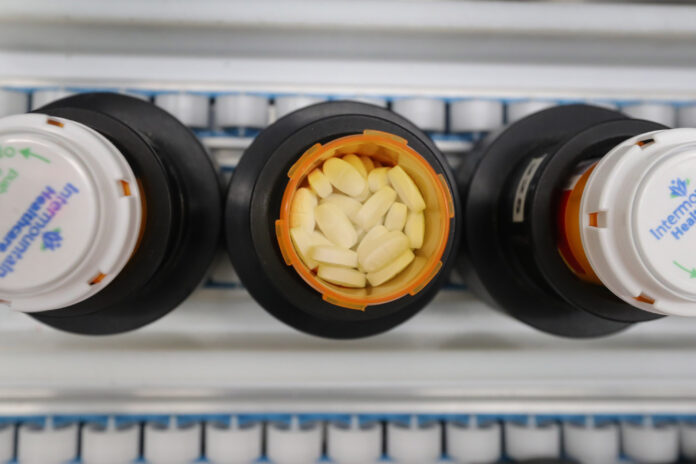In recent years, increasing geopolitical tensions, trade decoupling, and the coronavirus pandemic have revealed the vulnerability of America’s pharmaceutical supply chains. It is increasingly evident that the United States’ dependence on China is a significant risk, especially for obtaining vital medications. Addressing this risky dependency is of utmost importance.
Fortunately, India—an increasingly important partner and friend to the United States—is positioned to help. Tapping into this partnership and the burgeoning potential of India’s pharmaceutical manufacturing sector could be the key to alleviating this critical issue.
Experts have long recognized the risks of current drug supply chains. Well into the 1990s, Japan and Western nations produced well over 90 percent of the world’s active pharmaceutical ingredients (APIs). These are, per Janet Woodcock, the director of the FDA’s Center for Drug Evaluation and Research, “the actual drugs that are then formulated into tablets, capsules, injections, etc.” However, in 2017, China produced 40 percent of the world’s APIs. By the time the COVID pandemic hit in 2020, China “accounted for the bulk of exports of certain pharmaceutical raw materials” and “now plays an indispensable role in the supply chain for antibiotics and vitamins,” according to Nikkei Asia.
China’s indispensable role carries various national security implications. The U.S.-China Economic and Security Review Commission’s 2019 annual report, produced before the COVID pandemic, declared that the United States is so “heavily dependent” on China’s pharmaceutical sector that Beijing could “use U.S. dependence on China as an economic weapon and cut supplies of critical drugs.” The 2020 annual report, produced well into the COVID pandemic, called on Congress to “consider establishing a ‘Manhattan Project’-like effort to ensure that the American public has access to safe and secure supplies of critical…drugs and medical equipment.”
That access is already being undermined. A 2023 hearing by the Senate Committee on Homeland Security and Government Affairs found that “drug shortages increased by nearly 30 percent last year compared with 2021, with an average shortage lasting 18 months and some spanning 15 years. They include common antibiotics, anesthetics and sterile fluids used to keep intravenous drug tubes clean.” These kinds of shortages, caused by “an opaque supply chain and the fact that as much as 80 to 90 percent of certain products are made overseas,” amount to “serious national security threats,” according to Sen. Gary Peters (D-Mich.), the chairman of the committee.
Political leaders have made efforts to tackle this problem. Sen. Marco Rubio (R-Fl.), for example, late last year introduced the Further Strengthening America’s Supply Chain and National Security Act, which aims to “decrease our reliance on other countries to produce pharmaceuticals and increase control over our own supply chain for these life-saving drugs.”
Yet these sorts of efforts run into a major problem: costs. An investigation by Nikkei found that drug “producers are under especially high pressure to limit costs,” since “the only thing that makes a generic drug competitive is price.” At present, drug manufacturing is far too expensive in the United States and Europe, whereas Asian states have far lower costs owing to access to cheaper raw materials and less onerous environmental regulations.
George Frey/Getty Images
This is where India can be of great help to the United States and the West. New Delhi has been actively exploring strategies to achieve greater self-reliance in its own pharmaceutical supply chain.
In March 2020, India’s government unveiled a strategy to boost local manufacturing of key pharmaceutical components. This included implementing a Production Linked Incentive (PLI) program valued at 69.4 billion rupees (approximately $830 million), which provides financial incentives to qualified manufacturers for 53 crucial drug ingredients. The scheme has since expanded in the form of PLI 2.0, which aims to “enhance India’s manufacturing capabilities by increasing investment and production in the sector” and eventually “create global champions out of India.”
New Delhi’s goal, in other words, is to incentivize sufficient pharmaceutical production in India that the country’s industry can compete with China’s. If successful, the United States, Europe, and the rest of the democratic world would achieve strong pharmaceutical supply chain resiliency while reducing their dependence on Beijing.
Yet much work remains before this vision can become a reality. As noted by Flora Zhu, director of corporate research at Fitch Ratings, “the scale of the production reshoring is limited at this stage and global pharmaceutical companies still procure a large portion of APIs from China, given China’s significant cost advantages.”
Diminishing this capabilities gap will require new technological developments, particularly ones that enhance production efficiency and thus reduce the cost of raw materials for drugs. U.S. companies could assist in this endeavor, making strategic investments in and collaborating with Indian enterprises. Collaborations between U.S. and Indian institutions, such as the National Institutes of Pharmaceuticals Education and Research, would also yield myriad benefits.
Addressing America’s pharmaceutical supply chain vulnerabilities is of critical importance, and India’s rising pharmaceutical sector presents a unique opportunity. By collaborating with India, the United States can reduce its dependency on China, fostering a more secure and diversified supply chain. This partnership is key to enhancing global pharmaceutical resilience, but it will require focused efforts in technology, investment, and international cooperation. As the world confronts these challenges, U.S.-India collaboration could be a significant step towards a more secure, and healthy, future.
Dr. Rahul Tiwari is a medical professional based in Korba district in Chhattisgarh, India. He leads various NGOs providing medical services to underprivileged communities in rural India and has represented India at various multilateral forums, including BRICS, the G20 Youth Summit, the United Nations’ International Youth Day Summit, and Konrad-Adenauer-Stiftung. He has likewise participated in digital healthcare diplomatic initiatives with delegations to numerous developing nations.
The views expressed in this article are the writer’s own.
Uncommon Knowledge
Newsweek is committed to challenging conventional wisdom and finding connections in the search for common ground.
Newsweek is committed to challenging conventional wisdom and finding connections in the search for common ground.


